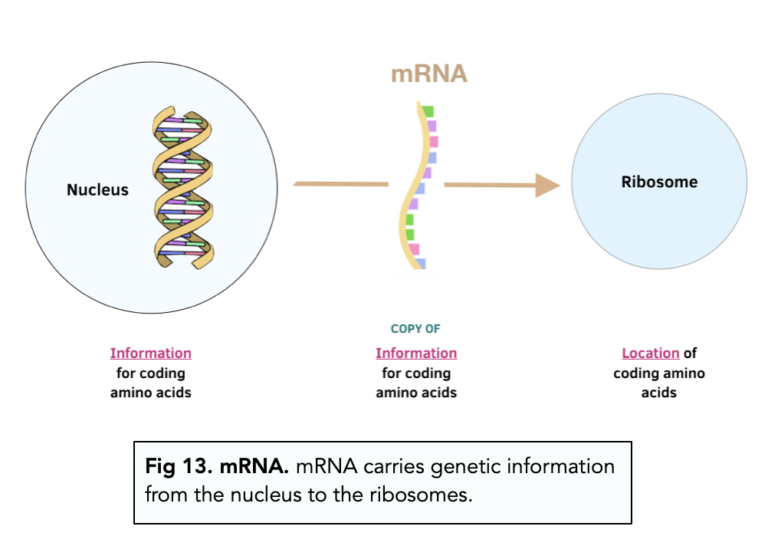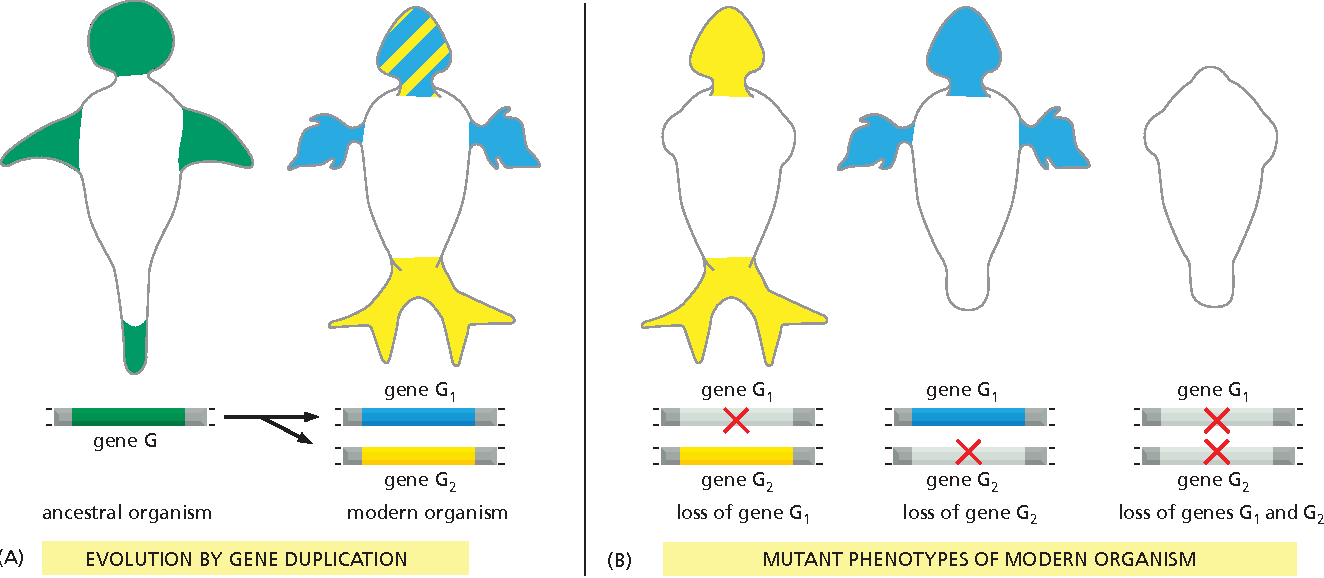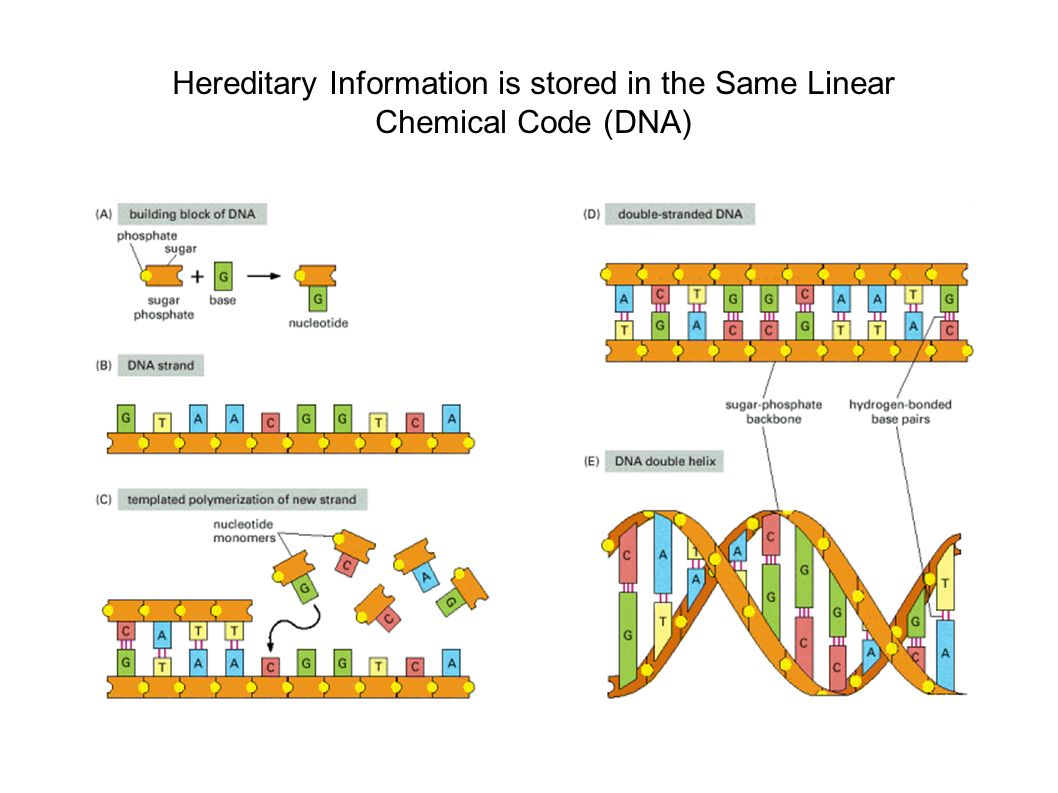Introduction
Transcription is a fundamental biological process through which cells convert genetic information encoded in DNA into RNA, an intermediary molecule essential for protein synthesis. This conversion is pivotal for gene expression, enabling cells to produce the proteins necessary for various cellular functions, growth, and response to environmental stimuli. Understanding transcription not only illuminates the intricate mechanisms of cellular biology but also has profound implications for genetics, medicine, and biotechnology.
In this comprehensive guide, we will delve into the intricacies of transcription, exploring its mechanisms, the types of RNA involved, regulatory processes, and its significance in maintaining genetic fidelity and diversity. Additionally, we will examine the technological advancements harnessing transcription and the ethical considerations arising from these innovations.
Understanding Transcription
Definition and Overview
Transcription is the process by which the genetic information stored in DNA is copied into a complementary RNA molecule. This RNA serves as a messenger, carrying the genetic instructions from the DNA in the nucleus (in eukaryotes) to the ribosomes in the cytoplasm, where proteins are synthesized. Transcription is the first step in the central dogma of molecular biology, which describes the flow of genetic information within a biological system.
Historical Perspective
The discovery of the double-helical structure of DNA by James Watson and Francis Crick in 1953 laid the groundwork for understanding how genetic information is stored and transmitted. Subsequent research by scientists like Francis Crick, Sydney Brenner, and others led to the elucidation of the central dogma, emphasizing the role of transcription in converting DNA into functional proteins. The identification of RNA polymerase, the enzyme responsible for synthesizing RNA, was a critical milestone in unraveling the transcription process.
Mechanism of Transcription
Transcription is a highly regulated and precise process, ensuring that genetic information is accurately transcribed from DNA to RNA. It involves three main stages: initiation, elongation, and termination.
Initiation
Initiation marks the beginning of transcription, where the transcription machinery assembles at the promoter region of a gene.
Promoter Recognition:
- The promoter is a specific DNA sequence located upstream of the gene to be transcribed. It serves as the binding site for transcription factors and RNA polymerase.
- In eukaryotes, core promoter elements include the TATA box, initiator (Inr), and downstream promoter element (DPE).
Transcription Factor Binding:
- General transcription factors (GTFs) recognize and bind to the promoter region, facilitating the recruitment of RNA polymerase.
- In eukaryotes, the TFIID complex binds to the TATA box, initiating the assembly of the transcription initiation complex.
RNA Polymerase Binding:
- RNA polymerase binds to the promoter region with the help of transcription factors, forming the transcription initiation complex.
- The DNA double helix begins to unwind, exposing the template strand for RNA synthesis.
Elongation
Elongation involves the synthesis of the RNA strand by RNA polymerase as it moves along the DNA template.
RNA Synthesis:
- RNA polymerase reads the DNA template strand in the 3’ to 5’ direction and synthesizes the RNA molecule in the 5’ to 3’ direction by adding complementary ribonucleotides.
- The ribonucleotides pair with their complementary DNA bases: Adenine (A) with Uracil (U), and Cytosine (C) with Guanine (G).
Helix Reformation:
- As RNA polymerase moves forward, the DNA double helix reforms behind it, maintaining the integrity of the DNA molecule.
Processivity:
- RNA polymerase remains attached to the DNA template, allowing continuous RNA synthesis without dissociating.
Termination
Termination concludes the transcription process, releasing the newly synthesized RNA molecule from the DNA template.
Termination Signals:
- In prokaryotes, termination often involves specific sequences such as rho-independent terminators that form hairpin structures, causing RNA polymerase to dissociate.
- In eukaryotes, termination is more complex, involving cleavage of the pre-mRNA and subsequent polyadenylation.
Release of RNA Transcript:
- The RNA molecule detaches from the DNA template, and RNA polymerase dissociates from the promoter region, ready to initiate another round of transcription.
Types of RNA
RNA plays various roles in the cell, serving as the intermediary between DNA and proteins. The main types of RNA involved in transcription and protein synthesis include:
Messenger RNA (mRNA)
Function:
mRNA carries the genetic code from DNA to ribosomes, where it serves as a template for protein synthesis.
Characteristics:
- Single-stranded molecule.
- Contains codons (three-nucleotide sequences) that specify amino acids.
- Undergoes processing in eukaryotes, including 5’ capping, splicing, and polyadenylation.
Transfer RNA (tRNA)
Function:
tRNA transports amino acids to ribosomes during translation, matching amino acids to the corresponding codons on the mRNA.
Characteristics:
- Cloverleaf secondary structure.
- Contains an anticodon that pairs with mRNA codons.
- Attached to a specific amino acid at the 3’ end.
Ribosomal RNA (rRNA)
Function:
rRNA is a structural and functional component of ribosomes, facilitating the assembly of amino acids into proteins.
Characteristics:
- Combines with ribosomal proteins to form ribosomes.
- Catalyzes peptide bond formation between amino acids.
- Highly conserved across different species.
Non-Coding RNAs
Function:
Non-coding RNAs perform various regulatory and catalytic functions within the cell.
Examples:
- MicroRNA (miRNA): Regulates gene expression by binding to complementary mRNA molecules, leading to their degradation or inhibition of translation.
- Small Interfering RNA (siRNA): Involved in RNA interference, silencing specific genes by degrading target mRNA.
- Long Non-Coding RNA (lncRNA): Plays roles in chromatin remodeling, transcriptional regulation, and post-transcriptional processing.
The Central Dogma of Molecular Biology
The Central Dogma of molecular biology describes the flow of genetic information within a biological system, outlining the processes by which DNA is transcribed into RNA and subsequently translated into proteins.

Figure 1: Central Dogma of Molecular Biology. DNA is transcribed into RNA, which is translated into protein.
Key Processes:
Replication:
DNA makes a copy of itself during cell division.Transcription:
DNA is transcribed into messenger RNA (mRNA).Translation:
mRNA is translated into a protein at the ribosome.
Importance of the Central Dogma:
Genetic Information Flow:
It provides a framework for understanding how genetic information is expressed within cells.Gene Regulation:
Insights into transcription and translation allow for the study of gene regulation and expression patterns.Biotechnological Applications:
Understanding these processes is fundamental for genetic engineering, gene therapy, and biotechnology innovations.
Transcription in Prokaryotes vs. Eukaryotes
While the core principles of transcription are conserved across prokaryotes and eukaryotes, there are notable differences in the complexity and regulation of the process.
Prokaryotic Transcription
Characteristics:
Simple Machinery:
Utilizes a single type of RNA polymerase to transcribe all types of genes.Operons:
Genes with related functions are grouped together under a single promoter, allowing coordinated expression.No Introns:
Prokaryotic mRNA typically lacks introns, meaning transcription and translation can occur simultaneously.Rapid Response:
Due to the absence of a nucleus, prokaryotes can quickly respond to environmental changes by regulating transcription in real-time.
Example: The lac operon in Escherichia coli regulates the metabolism of lactose, demonstrating coordinated gene expression in response to environmental lactose availability.
Eukaryotic Transcription
Characteristics:
Multiple RNA Polymerases:
Eukaryotes have three main RNA polymerases:- RNA Polymerase I: Transcribes ribosomal RNA (rRNA).
- RNA Polymerase II: Transcribes messenger RNA (mRNA).
- RNA Polymerase III: Transcribes transfer RNA (tRNA) and other small RNAs.
Complex Regulation:
Involves numerous transcription factors, enhancers, silencers, and epigenetic modifications to regulate gene expression.RNA Processing:
Eukaryotic mRNA undergoes extensive processing, including 5’ capping, splicing (removal of introns), and polyadenylation before becoming mature mRNA.Separation of Transcription and Translation:
Transcription occurs in the nucleus, while translation occurs in the cytoplasm, allowing for greater regulation and modification of RNA transcripts.
Example: In humans, the hemoglobin gene is regulated by various transcription factors and enhancers to ensure appropriate expression levels during development and in response to oxygen demand.
Regulation of Transcription
Regulating transcription is crucial for controlling gene expression, allowing cells to respond to internal signals and external environmental changes. Regulation occurs at multiple levels, ensuring precise control over which genes are expressed, when, and to what extent.
Transcription Factors
Definition:
Transcription factors are proteins that bind to specific DNA sequences, influencing the initiation and rate of transcription.
Types:
General Transcription Factors (GTFs):
Required for the basic transcription machinery to assemble at promoters.Specific Transcription Factors:
Bind to enhancers or silencers, modulating the expression of specific genes in response to signals.
Function:
Activation:
Enhance the binding of RNA polymerase to promoters, increasing transcription rates.Repression:
Inhibit the binding of RNA polymerase or block the action of activators, decreasing transcription rates.
Epigenetic Modifications
Definition:
Chemical modifications to DNA or histone proteins that affect gene expression without altering the DNA sequence.
Types:
DNA Methylation:
Addition of methyl groups to cytosine residues, typically repressing gene expression.Histone Modification:
Acetylation, methylation, phosphorylation, and ubiquitination of histone tails can either activate or repress transcription.
Function:
Chromatin Remodeling:
Altering the structure of chromatin to make DNA more or less accessible for transcription.Long-Term Gene Regulation:
Establishing patterns of gene expression that can be inherited through cell divisions.
Promoters and Enhancers
Promoters:
Definition:
DNA sequences located upstream of genes where RNA polymerase and transcription factors bind to initiate transcription.Components:
Include core promoter elements like the TATA box, initiator (Inr), and downstream promoter element (DPE).
Enhancers:
Definition:
DNA sequences that can be located far from the gene they regulate. They enhance the transcription levels of associated genes.Function:
Facilitate the binding of transcription factors and interact with promoters through DNA looping, increasing transcription efficiency.
Regulatory RNAs
Non-Coding RNAs:
miRNA and siRNA:
Involved in post-transcriptional regulation by binding to mRNA and preventing translation or inducing degradation.lncRNA:
Participate in chromatin remodeling, transcriptional regulation, and post-transcriptional processing.
Transcription Fidelity and Proofreading
Ensuring the accuracy of transcription is essential for maintaining the integrity of genetic information and proper cellular function. Cells employ several mechanisms to minimize errors during transcription.
Error Rates
While transcription is generally accurate, errors can occur, leading to mismatched bases in the RNA transcript. The natural error rate of RNA polymerase is approximately one mistake per 10^4 nucleotides added, which is higher than the error rate during DNA replication.
Proofreading Mechanisms
Unlike DNA polymerases, RNA polymerases lack intrinsic proofreading capabilities. However, cells have evolved additional mechanisms to maintain transcription fidelity:
- Backtracking and Cleavage:
- If RNA polymerase incorporates an incorrect nucleotide, it can backtrack, allowing the enzyme to cleave the erroneous RNA segment and resume correct transcription.
- Transcription-Coupled Repair:
- Specialized repair pathways recognize and correct errors that occur during transcription, ensuring that faulty RNA transcripts do not lead to dysfunctional proteins.
Mismatch Repair Systems
Post-transcriptional surveillance systems monitor RNA transcripts for errors and initiate degradation of faulty RNA molecules. These systems help maintain the quality of gene expression by removing transcripts with mismatches or other inaccuracies.
Transcription Errors and Their Effects
Errors during transcription can have significant consequences for cellular function and organismal health. Understanding these errors and their implications is crucial for comprehending genetic disorders and developing therapeutic strategies.
Mutations
Definition:
Mutations are permanent changes in the DNA sequence. While transcription errors do not alter the DNA itself, they can lead to faulty RNA and, consequently, malfunctioning proteins.
Types of Transcription Errors:
Misincorporation:
Incorrect base pairing during RNA synthesis leads to mismatched nucleotides in the RNA transcript.Abortive Initiation:
RNA polymerase repeatedly synthesizes and releases short RNA fragments without progressing into elongation.Transcription Slippage:
RNA polymerase slips on the DNA template, causing insertions or deletions in the RNA transcript.
Genetic Disorders
Impact of Transcription Errors:
Missense Errors:
Lead to the substitution of one amino acid for another in the protein, potentially altering its function.Nonsense Errors:
Introduce premature stop codons, resulting in truncated proteins that may be nonfunctional or harmful.Frameshift Errors:
Cause shifts in the reading frame, altering the entire downstream amino acid sequence and often leading to nonfunctional proteins.
Examples:
Cystic Fibrosis:
Mutations affecting the CFTR gene lead to defective protein function, causing respiratory and digestive issues.Sickle Cell Anemia:
A single nucleotide mutation results in an abnormal hemoglobin protein, causing red blood cells to become misshapen.
Technological Applications
Advancements in understanding transcription have led to significant technological innovations that impact research, medicine, and biotechnology.
RNA Sequencing
Definition:
RNA sequencing (RNA-Seq) is a high-throughput method used to analyze the complete transcriptome, providing insights into gene expression patterns, alternative splicing, and the discovery of novel transcripts.
Applications:
Gene Expression Profiling:
Identifying genes that are differentially expressed under various conditions or in different tissues.Disease Research:
Understanding the transcriptional changes associated with diseases like cancer, neurodegenerative disorders, and autoimmune diseases.Developmental Biology:
Studying gene expression dynamics during development and differentiation.
Gene Expression Analysis
Definition:
Gene expression analysis involves measuring the activity (expression) of genes to understand cellular functions, responses to stimuli, and the effects of genetic modifications.
Techniques:
Quantitative PCR (qPCR):
Quantifies specific RNA transcripts, providing precise measurements of gene expression levels.Microarrays:
Allow simultaneous measurement of the expression levels of thousands of genes, enabling comprehensive transcriptomic analysis.RNA-Seq:
Provides a more detailed and accurate analysis of the transcriptome compared to microarrays.
Applications:
Biomarker Discovery:
Identifying genes whose expression levels correlate with specific diseases or conditions.Functional Genomics:
Exploring the roles of genes in various biological processes and pathways.Personalized Medicine:
Tailoring treatments based on individual gene expression profiles.
CRISPR and RNA Technologies
CRISPR-Cas Systems:
Gene Editing:
CRISPR-Cas9 allows for precise editing of DNA, enabling the study and modification of gene function.Transcriptional Regulation:
Modified CRISPR systems can activate or repress gene expression without altering the DNA sequence, offering tools for controlling transcription.
RNA-Based Therapeutics:
RNA Interference (RNAi):
Techniques like siRNA and miRNA can downregulate gene expression, providing therapeutic strategies for diseases caused by overactive genes.Messenger RNA Vaccines:
Recent advancements, such as mRNA vaccines for COVID-19, demonstrate the potential of RNA-based technologies in medicine.
Implications in Medicine and Biotechnology
Understanding and manipulating transcription have profound implications for healthcare, biotechnology, and various industries.
Personalized Medicine
Definition:
Personalized medicine tailors medical treatment to the individual characteristics of each patient, including their genetic profile, lifestyle, and environment.
Role of Transcription:
Genetic Profiling:
Analyzing gene expression patterns to identify predispositions to certain diseases and tailor treatments accordingly.Targeted Therapies:
Developing drugs that specifically target transcription factors or other components involved in the expression of disease-related genes.
Therapeutic RNA
RNA-Based Therapies:
Antisense Oligonucleotides (ASOs):
Short DNA or RNA molecules that can bind to specific RNA transcripts, modifying their function or promoting their degradation.siRNA and miRNA Therapies:
Utilize small RNA molecules to silence or regulate the expression of target genes involved in disease processes.mRNA Vaccines:
Deliver mRNA encoding viral proteins to stimulate an immune response, providing protection against infectious diseases.
Applications:
Genetic Disorders:
Correcting abnormal gene expression patterns responsible for inherited diseases.Cancer Treatment:
Targeting genes involved in tumor growth and metastasis.Infectious Diseases:
Developing vaccines and antiviral therapies based on RNA technologies.
Biotechnological Innovations
Synthetic Biology:
Gene Circuits:
Designing synthetic gene circuits that control transcription in predictable ways, enabling the creation of engineered organisms with desired traits.Biomanufacturing:
Using engineered transcriptional systems to produce pharmaceuticals, biofuels, and other valuable compounds efficiently.
Industrial Biotechnology:
Bio-Based Products:
Harnessing transcriptional control to optimize the production of enzymes, biofuels, and other industrially relevant products.Environmental Biotechnology:
Developing organisms with modified transcriptional machinery to degrade pollutants and remediate contaminated environments.
Ethical Considerations
The manipulation of transcription and gene expression technologies raises significant ethical questions that society must address to balance scientific advancement with moral responsibility.
Genetic Privacy
Definition:
Genetic privacy concerns the protection of an individual’s genetic information from unauthorized access and misuse.
Issues:
Data Security:
Ensuring that genetic data collected from individuals is stored securely and protected from breaches.Consent:
Obtaining informed consent from individuals before collecting and using their genetic information.Discrimination:
Preventing the use of genetic information to discriminate in areas like employment, insurance, and social services.
Regulatory Measures:
Genetic Information Nondiscrimination Act (GINA):
Protects individuals from genetic discrimination in health insurance and employment in the United States.Privacy Laws:
Implementing stringent data protection regulations to safeguard genetic information globally.
Gene Editing Ethics
Definition:
Gene editing, especially in germline cells, involves altering the genetic makeup of organisms, raising ethical concerns about the implications and consequences of such modifications.
Concerns:
Safety:
Risks of unintended off-target effects and long-term consequences of genetic modifications.Consent:
Ethical dilemmas surrounding editing the genomes of embryos or germline cells, affecting future generations who cannot consent.Equity:
Ensuring fair access to gene-editing technologies to prevent social inequalities.Moral Boundaries:
Debates over the extent to which humans should manipulate genetic material, including the concept of “designer babies.”
Ethical Debates:
Pros:
Potential to eliminate genetic diseases, enhance human capabilities, and address food security through improved crops.Cons:
Risks of reducing genetic diversity, creating social disparities, and crossing ethical boundaries in altering human genetics.
Environmental Considerations
Gene Drives:
Definition:
Gene drives are genetic systems that increase the likelihood of a particular gene being inherited, potentially spreading desired traits through populations rapidly.Ethical Concerns:
Unintended ecological impacts, disruption of ecosystems, and the potential for irreversible changes to wild populations.
Biological Containment:
- Safety Measures:
Developing strategies to contain genetically modified organisms and prevent their uncontrolled spread in natural environments.
Regulatory Frameworks:
- International Guidelines:
Establishing global standards and regulations to govern the use of gene-editing technologies responsibly and ethically.
Conclusion
Transcription is a cornerstone of cellular biology, serving as the critical bridge between genetic information stored in DNA and the functional proteins that drive cellular processes. By transcribing portions of their hereditary information into RNA, all living cells ensure the accurate expression and regulation of genes, facilitating growth, development, and adaptation.
Understanding the mechanisms and regulation of transcription not only deepens our comprehension of fundamental biological processes but also unlocks transformative potential in medicine, biotechnology, and beyond. As technological advancements continue to evolve, harnessing the power of transcription holds promise for innovative therapies, enhanced agricultural practices, and sustainable environmental solutions.
However, with these advancements come ethical responsibilities. Balancing scientific progress with ethical considerations is imperative to ensure that the benefits of transcriptional technologies are realized responsibly and equitably. As we navigate the complexities of genetic manipulation and gene expression, fostering dialogue and establishing robust regulatory frameworks will be essential in guiding the ethical application of these powerful biological tools.
Embracing the study and application of transcription empowers us to explore the depths of life’s molecular intricacies, driving forward the frontiers of science and improving the well-being of living organisms on our planet.
Frequently Asked Questions (FAQs)
1. What is transcription in simple terms?
Answer:
Transcription is the process by which a cell converts the genetic information stored in DNA into RNA. This RNA serves as a messenger that carries instructions from the DNA to the ribosomes, where proteins are made.
2. What is the difference between transcription and translation?
Answer:
Transcription is the process of copying DNA into RNA, while translation is the process of using the RNA sequence to build proteins. Transcription occurs in the nucleus (in eukaryotes), and translation occurs in the cytoplasm at the ribosomes.
3. Why is RNA important in gene expression?
Answer:
RNA acts as an intermediary between DNA and proteins. It carries the genetic instructions from DNA to the ribosomes, where proteins are synthesized based on the RNA sequence.
4. How do cells regulate which genes are transcribed?
Answer:
Cells regulate transcription through various mechanisms, including the binding of transcription factors to DNA, epigenetic modifications like DNA methylation and histone modification, and the presence of enhancers and silencers that influence gene expression levels.
5. Can transcription errors affect protein function?
Answer:
Yes, errors during transcription can lead to the production of faulty RNA, which may result in incorrect or nonfunctional proteins. This can disrupt cellular functions and potentially lead to diseases.
6. What are the main types of RNA involved in transcription?
Answer:
The main types of RNA involved in transcription are messenger RNA (mRNA), transfer RNA (tRNA), ribosomal RNA (rRNA), and various non-coding RNAs like microRNA (miRNA) and small interfering RNA (siRNA).
7. How does RNA polymerase know where to start transcription?
Answer:
RNA polymerase recognizes specific DNA sequences called promoters, which signal the start site for transcription. Transcription factors help RNA polymerase bind to these promoter regions to initiate transcription.
8. What is the role of transcription factors?
Answer:
Transcription factors are proteins that bind to specific DNA sequences, helping to regulate the rate of transcription of genetic information from DNA to RNA. They can activate or repress gene expression based on cellular needs.
9. How does transcription differ in prokaryotes and eukaryotes?
Answer:
In prokaryotes, transcription is simpler with a single type of RNA polymerase and no introns in mRNA, allowing simultaneous transcription and translation. In eukaryotes, multiple RNA polymerases transcribe different types of RNA, and mRNA undergoes extensive processing before translation.
10. What advancements have RNA technologies brought to medicine?
Answer:
Advancements in RNA technologies, such as RNA sequencing, RNA interference (RNAi), and mRNA vaccines, have revolutionized medical research and treatment. They have enabled personalized medicine, targeted therapies for genetic disorders and cancers, and the rapid development of vaccines against infectious diseases like COVID-19.
Further Reading and Resources
To further enhance your understanding of transcription and its role in biology, explore the following resources:
Alberts’ Molecular Biology of the Cell:
An authoritative textbook offering comprehensive insights into cell and molecular biology, including detailed chapters on transcription.Khan Academy: Transcription:
Free video tutorials and practice exercises covering the basics and complexities of transcription.Nature Reviews Molecular Cell Biology:
Access high-quality review articles on the latest research and developments in transcription and gene regulation.National Center for Biotechnology Information (NCBI):
A vital resource for accessing scientific literature, genetic databases, and bioinformatics tools related to transcription and RNA biology.PubMed:
Search for scholarly articles and research studies on transcription mechanisms, regulation, and applications.The Double Helix by James D. Watson:
A firsthand account of the discovery of DNA’s structure and early understanding of genetic processes like transcription.BioNinja: Transcription:
An educational resource offering detailed notes, diagrams, and study guides on transcription for high school and undergraduate biology students.Genetics Home Reference:
A resource for understanding genetic conditions and the role of transcription in gene expression and inheritance.YouTube – CrashCourse Biology: Transcription:
Engaging video explanations of transcription processes and their significance in molecular biology.Ensembl Genome Browser:
Explore genomic data and understand the intricacies of gene transcription across different organisms.MIT OpenCourseWare: Molecular Biology:
Access free course materials, lectures, and assignments on molecular biology topics, including transcription.Genetic Science Learning Center:
Interactive lessons and resources on genetics, transcription, and RNA biology.CRISPR Therapeutics:
Learn about the latest developments in CRISPR and RNA technologies and their applications in medicine and biotechnology.Biology Online Dictionary:
Quick reference for definitions and explanations of key terms related to transcription and gene expression.Purdue Online Writing Lab (OWL):
Enhance your scientific writing skills with guides on essay structure, grammar, and style, useful for documenting transcription research.
Embark on your journey to master transcription and its pivotal role in cellular biology. Understanding how cells transcribe hereditary information into RNA not only deepens your grasp of genetic expression but also equips you with the knowledge to participate in cutting-edge scientific research and technological advancements. Stay curious, engage with these resources, and let the complexities of transcription inspire your scientific endeavors!




